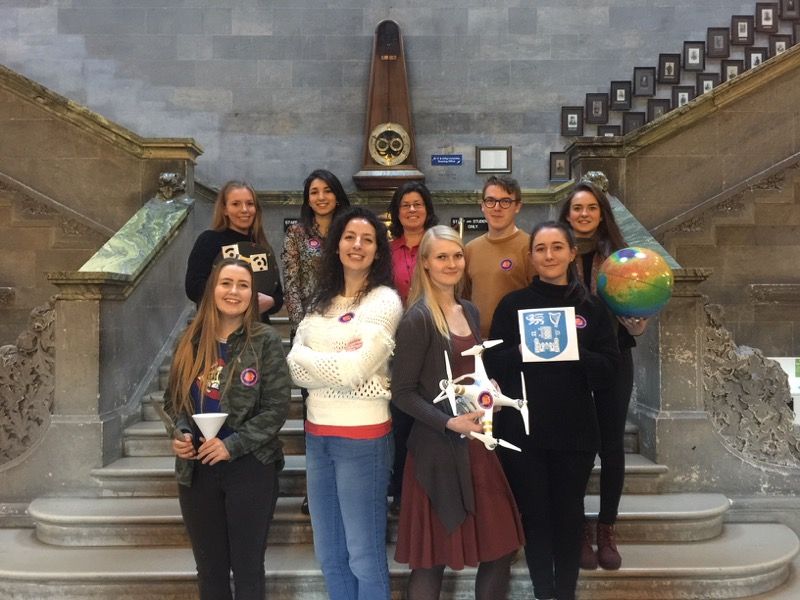The students dreaming of a Red Christmas
Posted on: 21 December 2017
As many of us tuck into our Christmas pudding, two teams of Trinity undergraduate students from Geography and Earth Sciences will be thinking less of snow and more of sand when they look to the skies – with their Red Planet-themed research projects up and running at the Mars Desert Research Station (MDRS) in Utah.
The two teams – named Gone with the Wind and Marv – had their project proposals accepted by MDRS Station Crew 185, who are implementing and overseeing the related experiments in Utah with the goal of developing our understanding of Mars and its geography to support future missions to the Red Planet.
The MDRS is owned and operated by the Mars Society, which established the Utah base in 2001. Each year, scientists undertake Earth-bound research there in Mars-like conditions. This year, the two teams of Trinity students will watch their missions unfold in real time, and will live-blog here as things progress.

Gone with the Wind’s experiment involves taking sediments of different sizes and testing their rate of transport by wind across the Utah desert, which is analogous to that of Mars. This should develop our understanding of how sediments are transported by the wind on Mars, which in turn may influence the location and placement of future Mars-based Hab stations.
Gone with the Wind brings together students Nancy Williams, Sorcha O’Carolan Murphy, Kiara Mulvey and Sarah Fisher, who are mentored by Dr Mary Bourke.
Team leader, Nancy Williams, said: “I have harboured aspirations for a career in space science since childhood and this project has given me the opportunity to delve into those dreams and gain some insight into what a mission entails. The experience has been extremely rewarding and I can’t wait to watch the mission unfold!”
Marv’s experiment will evaluate the responses of a vehicle with increased sediment sample loads over various terrain types to produce a hazard map for a specific study area, with the aim of creating a novel method to help scientists avoid hazards they might encounter while conducting fieldwork on Mars. Their idea sprung from the troubles encountered by the Mars Exploration Rover (Spirit) and the Opportunity Rover, when they got stuck in sand or damaged by terrain, and from a popular novel that inspired some Hollywood buzz last year.
Team Marv brings together students Lucie Delobel, Liza Jabbour, Emily Nolan, and Alexander Fitzpatrick, who are also mentored by Dr Mary Bourke.
Team leader, Lucie Dobel, said: “Space has always fascinated me and I often wonder what life would be like on another planet with a geomorphology very different from that of Earth. Inspiration for the project came from a scene in Andy Weir’s novel, The Martian. In a particularly memorable scene, the rover flips over and nearly kills the driver. It was this that led us to develop an experiment that will hopefully identify the most secure travel route over a given section of hazardous terrain.”
These students came together to study Mars in the JS Geography Module ‘Deserts of our solar system’ delivered this semester by Dr Mary Bourke.
Dr Bourke said: “The students have shown significant independence in developing these projects. We have been able to tap into their specific talents, which range from scientific innovation to graphic design and from public outreach to fund-raising.”
“It has been a remarkable journey for the students, and for me. We are very grateful to Polecat for providing funds to enable our students’ learning and engagement with the space sector.”
Updates on Mission progress will be posted here over the Christmas break.
